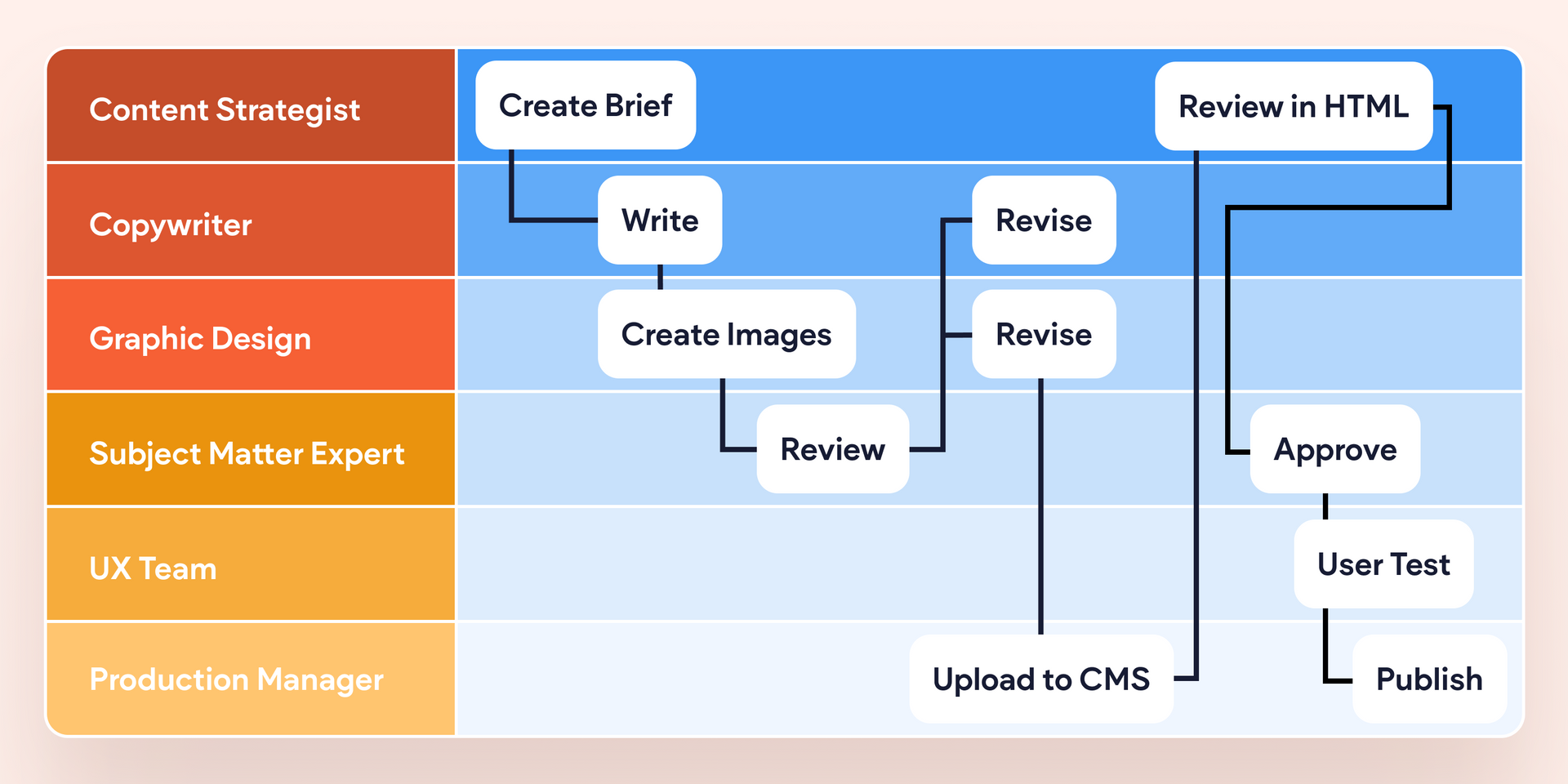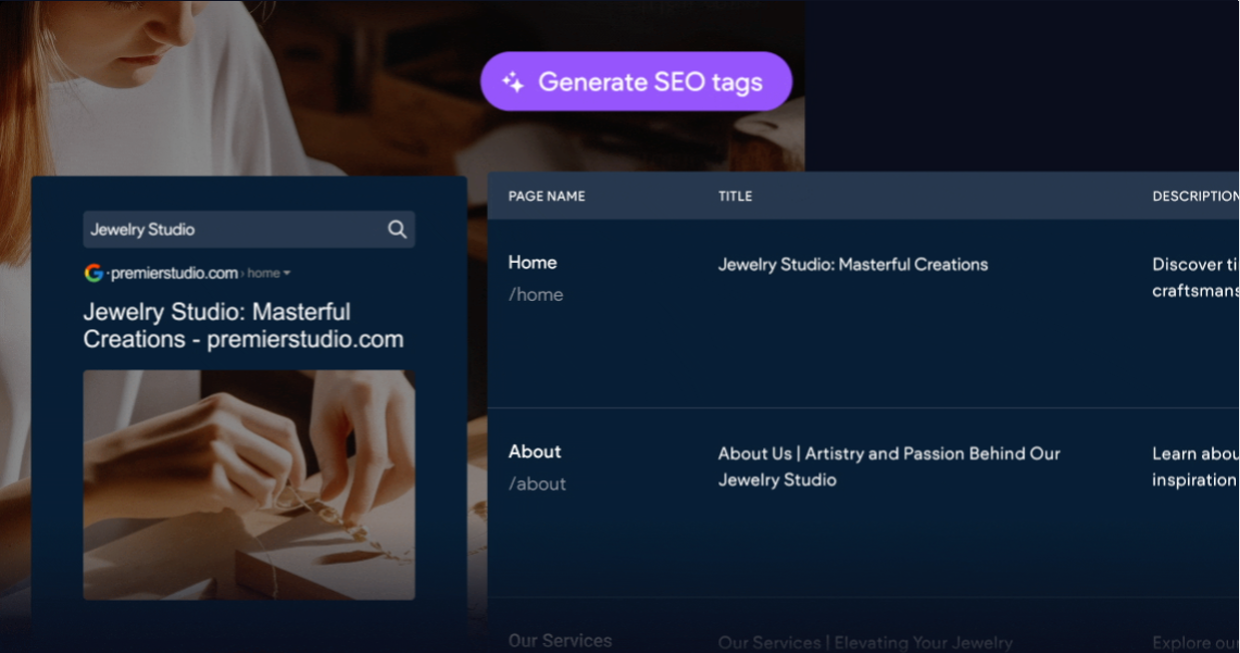The digital marketing landscape is constantly evolving, but the need for quality content remains critical to success, especially when it comes to ranking highly in search. In a recent
Core Update, for example, Google itself reinforced the importance of creating “helpful, reliable, people-first content” to weather search ranking volatility.
Because content is (still) king, the ability to effectively scale content is vital for businesses of all sizes and industries.
Digital agencies that can capitalize on this need and deliver high quality content to their clients at scale will emerge as the true winners.
Table of contents
- What is content scaling?
- Why is content scaling important?
- Challenges to scaling content
- How to scale content effectively
- Best content scaling tools
What is content scaling?
Content scaling is the process of creating more and better content, faster, without adding a lot of extra resources or costs. To be truly effective, content scaling should not just increase the volume of content, but also ensure its quality and relevance.
Why is content scaling important?
Improve SEO performance
Consistently adding fresh content is one of the cornerstones of an effective SEO strategy. Regularly updating a website with fresh, relevant content significantly boosts its visibility and ranking on search engines.
That’s because search engines prioritize websites that are frequently updated with high-quality content, interpreting this as a sign of the site's relevance and authority. Continuously adding new content also helps cast a wider net, so you can capture a greater variety of search queries and engage a broader audience.
Build brand authority
Diversified content such as blog posts, infographics, videos, and case studies can address specific customer pain points, answer their questions, and showcase the value of products or services. Having a robust library of this valuable content not only enhances the user experience, but also positions the website as a comprehensive resource, building trust and credibility with the target audience.
Drive higher conversion rates
Scaled content plays a pivotal role in converting website visitors to clients or customers. More content means you have more touchpoints for engagement and conversion. Relevant CTAs–integrated within each piece of content–guide website visitors through a path towards conversion. This could include prompts for newsletter sign-ups, free trials, product demos, or direct purchases, depending on the business and stage of the customer journey.
Check out our blog post on
content mapping best practices to learn how to craft a content strategy that nurtures and converts users through every stage of the customer journey.
Grow your agency’s revenue
For agencies, being able to take on more client work without a lot of extra time and effort is key. When you nail down a scalable approach to content, you can not only offer more value to your existing clients, increasing satisfaction and stickiness, but you can also onboard more new clients to supercharge your agency’s growth.
And if you don’t already offer content creation services, learning how to create content at scale can open up a totally new revenue stream for your business.
Challenges to scaling content
Great, you’re sold on scaling content, but why isn’t everyone already doing this? Well, there are a few potential pitfalls when it comes to ramping up your content production. These are the most common traps agencies fall into:
Maintaining quality at scale
One of the primary challenges when scaling content is maintaining the quality of the content as the volume increases. Quality can be a vague and subjective term, but in general to achieve your content goals, each piece of content should offer real value to the reader while aligning with the client’s brand, messaging, and SEO objectives. As the volume of content increases, this often becomes increasingly difficult to manage.
Losing sight of the audience
Another common pitfall with content scaling is when teams start creating content for the sake of creating content. Don’t set yourself (or your client) up for failure by producing generic content without clear value for the target audience. More content alone won’t help you achieve your goals.
Meeting diverse client needs
Web building agencies typically work with a range of clients, each with unique content needs and preferences. Developing a scalable content strategy that can be customized for different clients requires a deep understanding of each client's audience, industry, and specific goals.
8 ways to effectively scale content creation
Here are 8 ways to scale your content operations - while maintaining quality and keeping a tight focus on the target audience, even across multiple clients.
1. Define clear content objectives
Before you set pen to paper, you’ll want to start by setting specific, measurable goals for your content. Understand why you are generating all of this content - whether it's to drive traffic, improve SEO, showcase new product or service offerings, or engage a particular segment of the audience. This clarity will guide your content creation efforts and ensure they align with both your agency's and your clients' broader objectives.
Having a clear vision for your content from the get-go becomes a north star for all content that your team creates, whether that content is written by internal writers, freelancers, or even an
AI content generation tool.
Plus, a solid content strategy and clearly articulated goals means you’ll waste less time figuring out how to salvage content after it’s already been written.
2. Use a brand style guide
In the same way having a content strategy can help you speed up content creation, so too can a brand style guide. This guide is the go-to reference for your team to maintain consistency across all content.
While often seen as a design document, a brand style guide is incredibly valuable for written content as well. A comprehensive brand guide should include the brand’s tone of voice, legal guidelines (if any), as well as editorial guidelines for grammar, punctuation, formatting, and standard usage for specific terms and phrases (for example, whether to use eBook or e-book).
Documenting these expectations and sharing them with all writers–internal and external–means better quality, on-brand drafts and less time spent editing. If you’re an agency writing on behalf of a client, always ask your client if they can share their brand guidelines before you begin creating content for them, and make sure to share them with anyone creating content for that client.
3. Know your niche
The better you understand your audience, the better your content will be and the higher it will rank. Just ask Google.
Google uses the concept of
E-E-A-T (which stands for Experience, Expertise, Authoritativeness, and Trustworthiness) to determine what content to show in search results. Remember, a search engine's primary goal is to serve up helpful, relevant content in response to user queries.
This means SEO content needs to reflect genuine experience and expertise in the subject matter. To achieve this, you’ll really need to deeply understand your audience–their needs, preferences, and pain points–to deliver content that ranks, resonates, and provides real value.
Beyond improving SEO performance, knowing your audience well also massively speeds up the content creation process. When you intimately understand the challenges, motivations, and needs of your audience, it’s much easier to come up with great content ideas and craft a compelling story for your readers.
Marketing and agency leaders can foster this level of expertise in few ways (or, most likely, a combination of all three):
- Hiring writers that already have deep audience knowledge
- Training human writers on the target audience
- Training AI content generation tools on the target audience
OK, so those last two are actually not as different as they might seem…
To train human writers, you’ll need to give them resources to build a solid working knowledge of the audience–things like buyer personas, competitive examples, industry publications, access to industry experts, and more.
Training AI is not all that different.
Using progressive prompting, you can “teach” an AI tool like ChatGPT to understand your audience before you ask it to write anything at all. Simply create a new chat for each vertical or client, and add all of the relevant information. Any subsequent prompts will use this information to generate much more relevant and valuable content.
Check out our favorite AI prompts for website content creation, SEO, and web building.
However, keep in mind that
generative AI is known to hallucinate. So, while AI generated copy is a great starting point, you’ll still need human oversight (and expertise) to verify accuracy.
Learn how to train AI on your audience and more AI and content creation tips from
Andy Crestodina (DudaCon 2023 Recording, AI and Content Creation).
4. Templatize your content
Another great way to speed up content production is to create templates for common types of content. Templates act as a guide, providing writers with clear direction on layout, tone, and key elements to include, while still allowing room for creativity and customization.
While not every piece of content will neatly fit into a template, many do. For example, virtually any case study can be told well following the same narrative arc:
- Set the stage
- Describe the challenge
- Explain the solution
- Show the impact
- Call to action
Web copy, product descriptions, research reports, landing pages, press releases, emails, and more can often be built quickly using a standard template as a starting point. As an added bonus, templatizing your content can also create a better, more consistent web user experience.
5. Create a well-defined process
Creating repeatable and well-defined workflows is a vital step in scaling content production.
Using a project management tool like
Trello or
Asana is key in this process. These tools can be used to track progress, assign tasks, set deadlines, and send reminders. This not only helps in keeping the team on track but also provides visibility into the content pipeline, allowing for better planning and resource allocation.
Establishing clear roles and responsibilities is also key. Each team member should know their specific roles in the content creation process. For example, who is responsible for initial research, who writes the first draft, who handles editing and fact-checking, who is in charge of graphics and layout, and who gives the final approval before publication? This clarity prevents overlap and confusion, ensuring that everyone knows what is expected of them.
6. Repurpose content for different platforms and audiences
Scaling content effectively often involves smart strategies like repurposing and personalizing high-performing content. This approach allows content teams to extend the reach and impact of existing content by adapting it into various formats and audience segments, saving both time and resources in the process.
For example, an eBook can be repurposed into a series of blog posts, videos, social media posts, and much more, enabling your team to spin up a lot of different marketing assets very quickly.
Similarly, a high-performing landing page can be repurposed and personalized to meet the needs of new audience segments with minimal effort.
7. Use a content calendar
An content or editorial calendar is a powerful tool for content scaling, especially when managing a high volume of content across various projects, platforms, and clients. It acts as a strategic planner, enabling you to map out content on a large scale, ensuring that you're not just producing more content, but doing so in a structured, well-organized manner.
An editorial calendar enhances team collaboration and coordination, which is crucial when scaling content production. It provides a clear overview of what needs to be produced, by whom, and when, facilitating efficient workload distribution and ensuring that all team members are aligned with the content strategy. This is particularly beneficial when working with larger teams or when coordinating across different departments or with external collaborators.
If you don't have a content management tool already in place, a simple
Google Sheet is often a great place to start.
8. Leverage AI at every step of content creation
Generate content ideas
Using AI to generate content ideas can substantially speed up the content creation process. AI tools can swiftly analyze current market trends, competitor content strategies, and consumer behaviors, providing a wealth of data-driven insights. This helps content strategists quickly identify content gaps and opportunities that might otherwise go unnoticed. Agencies can leverage these insights to quickly brainstorm and validate content ideas that are more likely to resonate with their target audiences.
Outline content
Use AI to speed up the outlining process. Use a tool like ChatGPT to suggest headings, subheadings, and key points that should be covered to ensure comprehensiveness and relevance. AI can identify patterns and elements that have historically performed well, allowing content creators to craft outlines that are more likely to engage readers and rank higher in search engine results.
Write first drafts
There are few things more frustrating to a writer than staring at a blank page. AI can help overcome writer's block by generating initial draft content based on the topic, target audience, and keywords. An AI tool can provide the basic structure, suggest ideas, or even draft entire sections of content, allowing writers to focus on refining and adding a personal touch rather than starting from scratch.
Revise content
AI also makes editing content much much faster. When writers spend a lot of time looking at the same piece of content, it’s easy to miss errors. AI can be a fast and effective proofreader. Use it to identify and correct grammatical errors, including fixing punctuation, spelling, and syntax issues. You can also use AI to adjust the tone to ensure it aligns with the intended audience or brand voice, shorten or lengthen copy to fit a design, and much more.
Optimize content for SEO
AI for SEO is a game-changer. AI algorithms can analyze data, including search trends and user behavior, to provide actionable insights for SEO optimization. AI tools can also help with on-page optimization. For example, use Duda’s native AI Assistant to instantly generate web copy, titles, headlines, meta descriptions, alt text, and more with the click of a button.
Best tools for scaling content
Duda’s AI Assistant
Built right into the Duda platform, our
AI Assistant takes content scaling to the next level. Accelerate your most time-consuming content and web building workflows with pre-engineered prompts built right into the platform.
Use Duda’s AI Assistant to instantly generate compelling content, improve existing copy, and adjust text to fit the design of the web page or match the right tone of voice. The tool can also generate keyword-rich SEO metadata in seconds, including titles, descriptions, alt text, and more.
ChatGPT
ChatGPT is a powerful generative AI tool that can significantly speed up the process of creating articles, blog posts, social media updates, and more. Use ChatGPT to brainstorm ideas, create outlines, and even generate initial drafts, so your content team can focus more on refining and customizing content.
Effective content scaling drives business growth
Content scaling is essential for businesses and agencies aiming to amplify their impact and foster growth. By efficiently producing high-quality, diverse content at scale, organizations can significantly boost their online presence and audience engagement.
When you unlock the power of content at scale, you can effectively transform your or your clients’ digital footprint, turning your audience into dedicated followers and customers, and cementing your position as a leader in your industry.
Related Posts
By Ilana Brudo
•
December 16, 2025
AI browsers and agents are reshaping the web. Discover how marketers and agencies must adapt website structure, analytics, and content strategy for this tectonic shift.
By Arnoldo Lopez
•
December 9, 2025
Unlock high-velocity development by integrating the Duda API with your AI assistant using the Model Context Protocol (MCP). Learn to build a functional Duda MVP from a simple prompt.
By Ilana Brudo
•
November 13, 2025
Don't let AI-generated websites cause day-two headaches. Learn why agencies need governance and control, and how Duda's AI stack offers speed without the risks.
Show More










